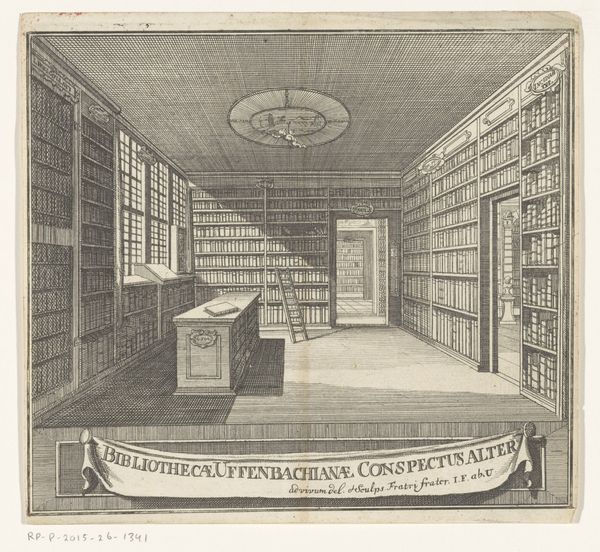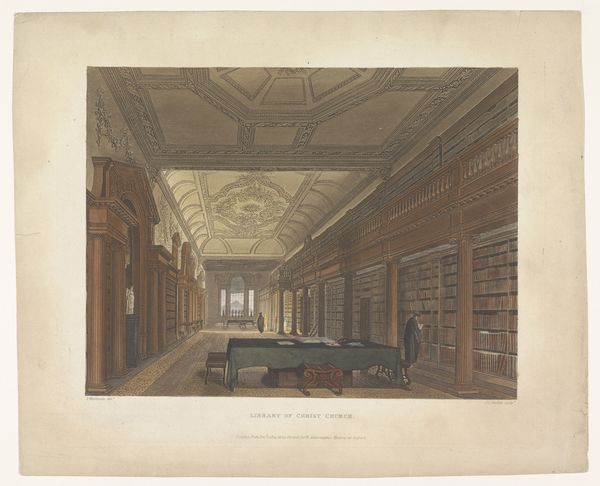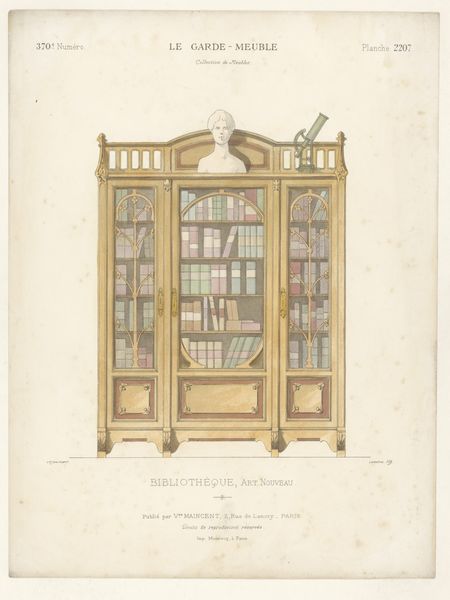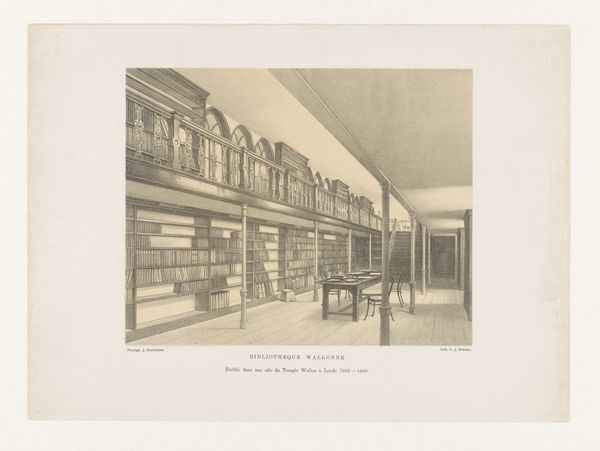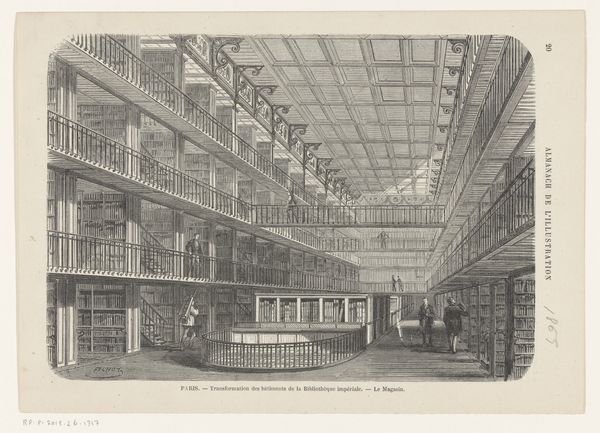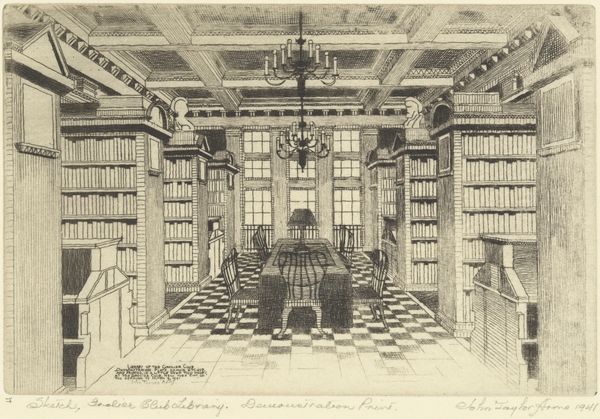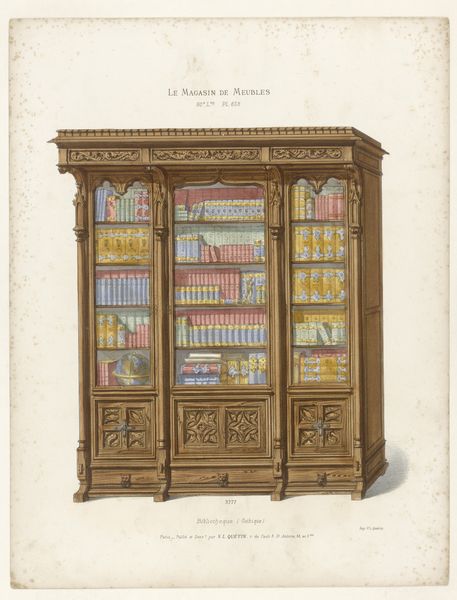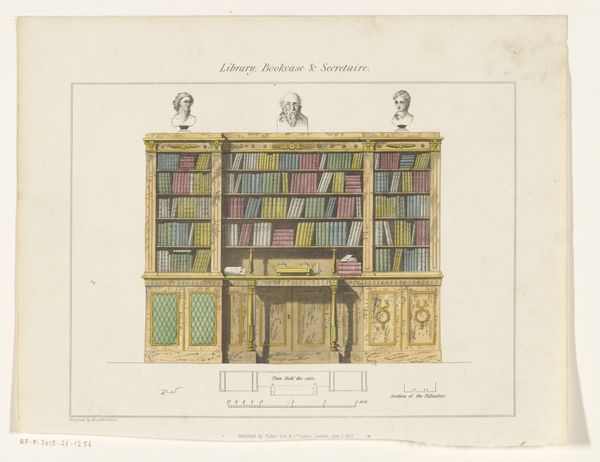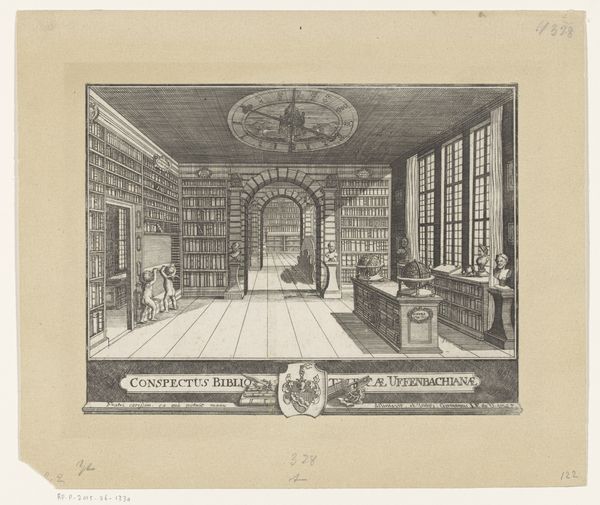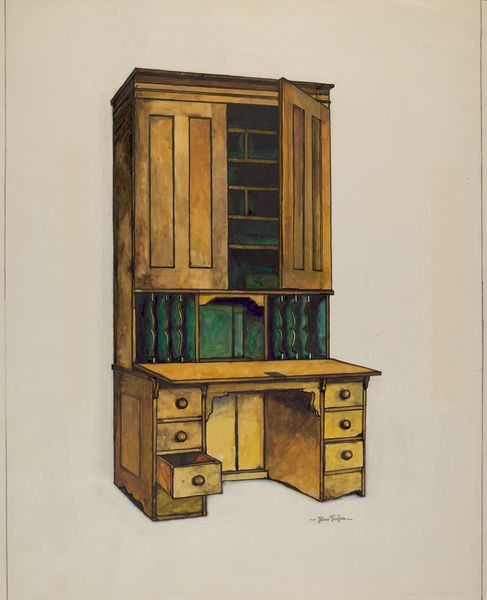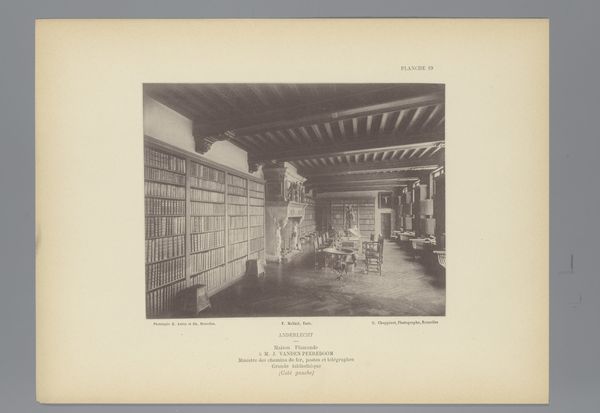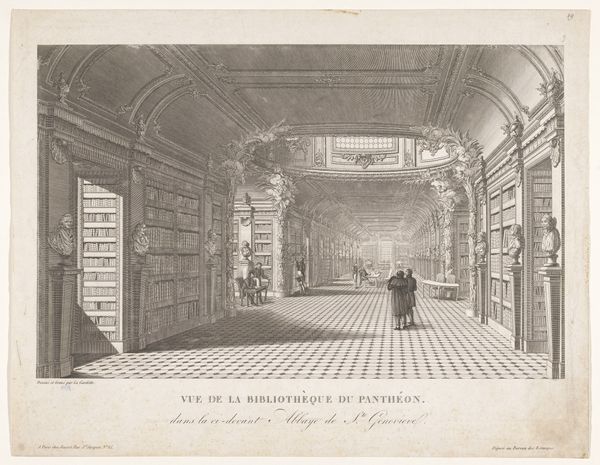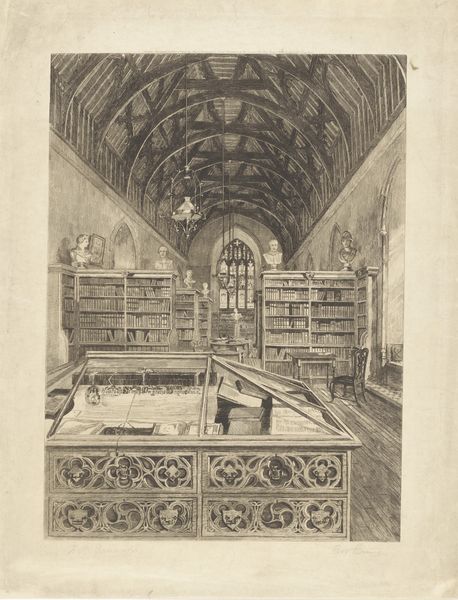
drawing, watercolor, architecture
#
interior architecture
#
drawing
#
landscape
#
perspective
#
watercolor
#
classicism
#
genre-painting
#
history-painting
#
architecture
Dimensions: height 242 mm, width 285 mm
Copyright: Rijks Museum: Open Domain
This watercolour painting, made by an anonymous artist around 1815, depicts the interior of James Cawthorn's bookstore in London. Notice the meticulous rendering of the books, shelf upon shelf. The artist painstakingly used watercolour paints to mimic the texture of the paper and the patterns of the leather bindings. The application would have been slow and meticulous. Watercolour, while celebrated for its delicacy, requires many layers to build up a convincing sense of depth, each carefully applied to avoid smudging the paper. Think of this scene in terms of the economic system it implies. Bookstores like Cawthorn's were centres of intellectual life, but also hubs of a thriving print industry. The Industrial Revolution increased book production, while a growing middle class demanded greater access to knowledge and entertainment. The books themselves, produced by skilled laborers, are a physical embodiment of these social shifts. Looking closely at the painting, we can appreciate how the materials and processes of both art and bookmaking are intertwined with the social fabric of the time. These practices challenge our traditional understanding of art and its role in reflecting culture.
Comments
No comments
Be the first to comment and join the conversation on the ultimate creative platform.
